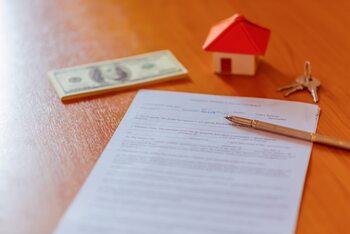Aspects to consider for a sustainable and responsible rental

Renting a home can be a transformative decision, not only for your lifestyle but also for the environment. In this article, we will explore the key aspects you should consider to make a sustainable and responsible rental. From energy efficiency to location, every detail matters. Discover how to choose a home that not only meets your personal needs but also contributes to a greener future. Become a conscious tenant and turn your rental experience into an opportunity to care for our planet.
1. Importance of sustainability in rental.
Sustainability in renting is essential in a world where natural resources are increasingly scarce and environmental awareness is growing. By choosing a home that meets sustainable criteria, you are not only making a personal decision, but also playing an active role in reducing your ecological footprint. This translates into selecting properties that use renewable energy, have efficient insulation systems, and promote recycling practices. In this way, not only are the costs associated with utilities reduced, but it also contributes to the health of the planet by lowering carbon emissions.
Furthermore, the importance of sustainability lies in its ability to inspire positive changes in communities. When tenants choose sustainable housing, they create a demand that can encourage landlords and real estate companies to adopt more responsible and eco-friendly practices. Thus, by being part of this movement towards conscious living, you help create a virtuous cycle where more people become interested in options that respect the environment. This collective transformation can lead to cleaner and healthier cities, promoting a lifestyle that prioritizes both individual and collective well-being.
2. Types of sustainable housing: which one is best for you?
When considering a sustainable rental, it is essential to know the different types of housing that can meet your needs and values. Eco-friendly homes, for example, are designed with sustainable materials and technologies that minimize environmental impact, such as solar panels and rainwater harvesting systems. Choosing a home built under these principles not only helps reduce your carbon footprint but can also translate into lower energy costs in the long run. This type of housing is ideal for those seeking an efficient home committed to sustainability.
Another option is apartments in green buildings, which often have environmental certifications such as LEED or BREEAM. These spaces are designed to maximize energy efficiency and sustainable water use, as well as promote healthy environments through indoor air quality and the use of non-toxic materials. Living in one of these apartments allows you to enjoy all modern conveniences while actively contributing to environmental protection. When choosing between these alternatives, it is essential to evaluate your personal priorities and lifestyle to find the home that best suits you and the planet.
3. Energy efficiency: keys to an eco-friendly home
Energy efficiency is a fundamental aspect to consider when looking for an eco-friendly home. Choosing a residence with proper insulation systems, double-glazed windows, and efficient appliances not only reduces energy consumption but also lowers monthly bills. By selecting properties with energy efficiency certifications, such as the energy label, tenants can ensure that their new home meets standards that minimize environmental impact. This translates into more responsible resource use and a smaller carbon footprint.
Additionally, implementing sustainable practices within the home can further enhance energy efficiency. Small changes, such as using LED bulbs, installing programmable thermostats, or maximizing natural light, significantly contribute to reducing daily electricity consumption. Water management is equally crucial; opting for water-saving faucets and showers not only benefits the environment but also helps keep utility costs low. When considering these elements in your search for a rental, you are not just choosing a space to live, but also making an investment in a more sustainable future for everyone.
4. Location and access to public transportation
The location of the home you choose plays a fundamental role in the sustainability of your lifestyle. Opting for a home that is close to essential services such as supermarkets, schools, and workplaces not only reduces the need for transportation but also decreases the carbon emissions associated with commuting. When considering the location, look for neighborhoods that promote an active community life and offer options for walking or biking. This not only enhances your quality of life by facilitating access to various activities but also helps create healthier and more connected environments.
Access to public transport is another critical aspect to consider. Living close to subway stations, bus stops, or trams can make a big difference in your ecological footprint. Choosing a well-connected home will allow you to reduce car usage, favoring more sustainable modes of transport like trains or buses. Additionally, good access to public transport encourages less dependence on private vehicles and promotes a more active and less polluting lifestyle. In the long run, this not only benefits the environment but can also result in significant economic savings by decreasing expenses associated with car ownership and maintenance.
5. Construction materials and their environmental impact
When considering sustainability in renting a home, it is crucial to pay attention to the construction materials used in the building. Materials such as certified wood, bamboo, and recycled products tend to have a lower environmental impact compared to more conventional options like concrete or steel. By opting for homes built with eco-friendly materials, one not only supports a more sustainable economy but also promotes a lifestyle that prioritizes the health of the environment. The choice of these materials can significantly reduce carbon emissions and the use of natural resources during construction.
Additionally, it is important to consider how materials affect energy consumption and thermal efficiency in the home. For example, homes built with proper insulation and double-glazed windows can reduce the need for artificial heating and cooling, resulting in lower energy consumption over time. This not only benefits the tenant through reduced bills but also minimizes the home's ecological footprint. Researching the materials used in construction can be an essential step towards responsible renting that promotes both personal well-being and care for the planet.
6. Environmental certifications to consider
When considering a sustainable and responsible rental, it is essential to pay attention to environmental certifications that can support the ecological quality of the property. Certifications such as LEED (Leadership in Energy and Environmental Design) or BREEAM (Building Research Establishment Environmental Assessment Method) are key indicators that the property has been designed and built with sustainability criteria. These certifications evaluate aspects such as energy efficiency, the use of recycled materials, and water management, ensuring that the home is not only comfortable but also environmentally friendly. By choosing a home with these accreditations, you not only contribute to a healthier environment but can also benefit from lower utility costs in the long run.
In addition to LEED and BREEAM, there are other certifications that may be relevant depending on your location. For example, the Energy Star label focuses on the energy efficiency of appliances and systems within the home. Likewise, some communities offer specific seals that address sustainable local practices or efficient water use. Researching these certifications will allow you to make informed decisions when renting, ensuring that your new home meets high standards of sustainability and environmental responsibility. Ultimately, choosing properties with environmental certifications not only enhances your quality of life but also fosters a positive impact on the community and natural environment.
7. How to assess water consumption in a household
To evaluate water consumption in a home, it is essential to observe both the installations and usage habits. Start by checking if there are low-flow faucets, toilets, and showers, as these fixtures are designed to reduce water usage without sacrificing comfort. You can also ask the owner or landlord about the water consumption history in the home; many owners keep records that can provide you with a clear insight into consumption patterns over time. A detailed reading of the water meter can be a good indicator of potential leaks or misuse, which could significantly increase the bill. Additionally, it is important to consider how daily habits impact consumption. Implementing practices such as shorter showers, fixing leaks, and using efficient appliances are simple steps that everyone can adopt to minimize our water impact. Make sure to educate yourself on techniques such as rainwater harvesting or installing efficient irrigation systems if you have outdoor space. By becoming a water-conscious tenant, you will not only be taking care of your wallet but also contributing to a more sustainable and responsible environment.
8. Community and green spaces: benefits of the natural environment
Choosing a home involves not only considering the internal characteristics of the dwelling but also the surrounding environment. Opting for a location with green spaces and access to natural areas can offer numerous benefits for both your well-being and the environment. Parks, gardens, and wooded areas promote biodiversity and help improve air quality while providing recreational spaces where tenants can enjoy outdoor activities. By choosing a home in a community with abundant green spaces, you are not only contributing to your physical and mental health but also supporting a more sustainable ecosystem. Furthermore, living in a community that values the natural environment can foster a sense of belonging and social cohesion among neighbors. Green areas often serve as meeting points where people gather to socialize, play sports, or simply enjoy nature. This type of social interaction not only strengthens community relationships but also drives local initiatives to care for and preserve the environment. Choosing to rent in a place with these characteristics can be a significant step towards a more responsible and sustainable lifestyle, turning every walk in the park into an opportunity to reconnect with nature and promote positive change in your community.
9. Tips for negotiating responsible rental terms
Negotiating the terms of a rental is a fundamental part of ensuring that your experience as a tenant is not only positive but also responsible. Before signing any contract, it is important to discuss aspects such as energy consumption, waste management policies, and the use of sustainable materials in the property. Ask the landlord if they are willing to implement energy efficiency improvements, such as installing LED bulbs or energy-efficient appliances. These changes can lower your monthly bills and contribute to a reduced environmental impact.
Additionally, do not hesitate to negotiate terms that encourage sustainable practices. For example, you can propose an agreement that includes incentives for using public transportation or bicycles, or even establish clauses that allow for environmentally friendly modifications to the property. It is vital to remember that good communication can lead to mutually beneficial solutions and create a more conscious environment from the start of the lease. By addressing these issues during the negotiation, you not only secure a home that aligns with your eco-friendly values but also promote a culture of environmental responsibility in your community.



